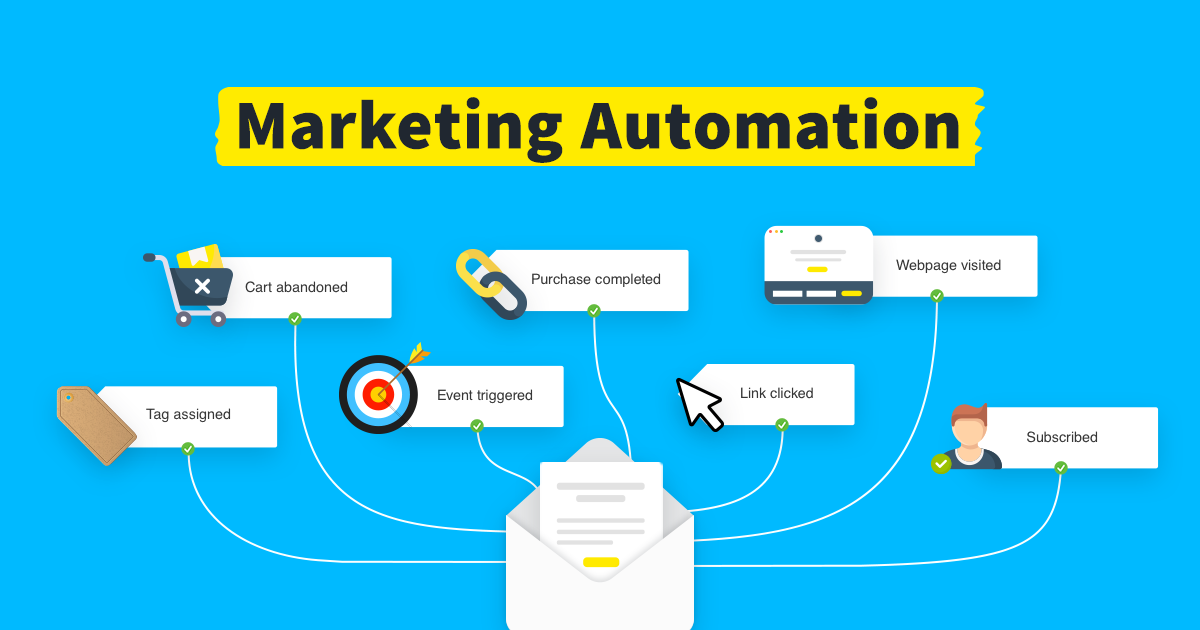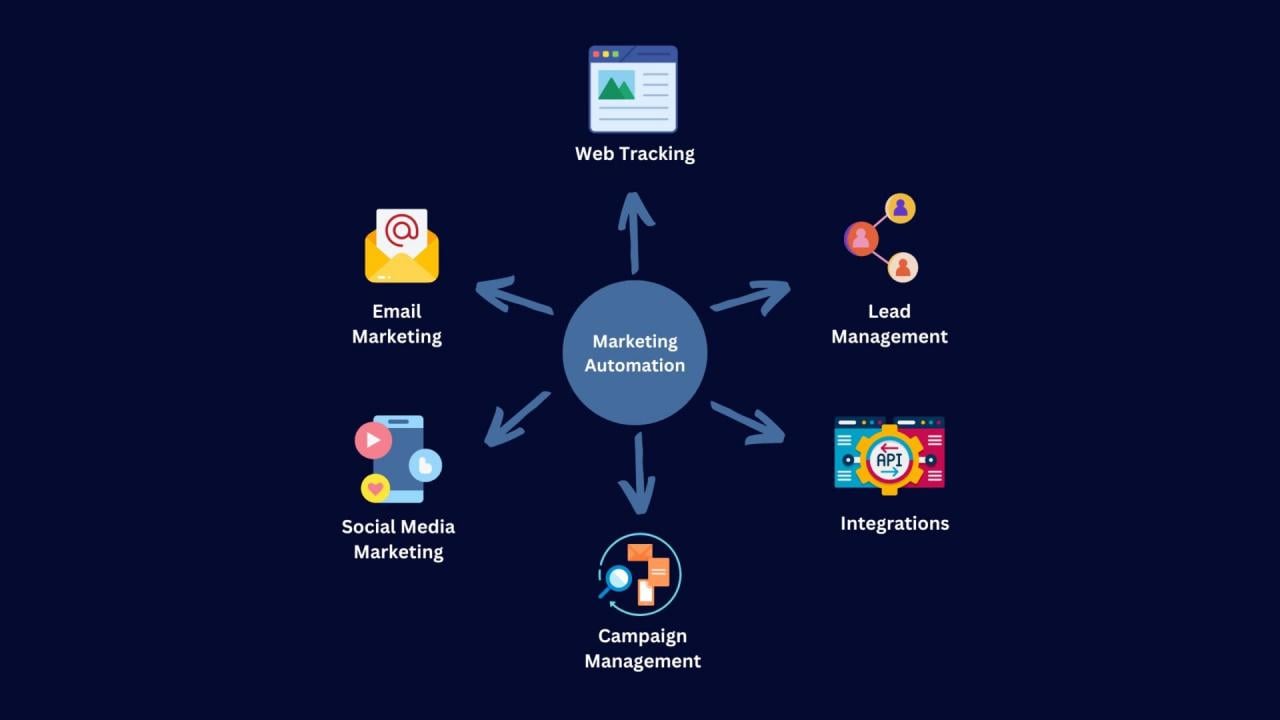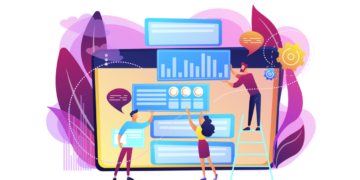
In the modern digital economy, the sheer volume of data, the explosion of communication channels, and the demand for hyper-personalization have rendered traditional, manual marketing practices obsolete. Enter Marketing Automation (MA), the essential technological backbone that allows businesses to streamline, execute, and measure high-impact marketing campaigns at scale. It’s no longer a niche tool but a crucial system driving Return on Investment (ROI), enhancing customer experience, and directly boosting the bottom line. This comprehensive article delves into the core mechanics, undeniable benefits, and advanced strategies of marketing automation, positioning it as the indispensable engine for unprecedented business growth and superior SEO performance.
I. Defining the Marketing Automation Imperative
Marketing Automation refers to the use of software platforms to automate repetitive marketing tasks. Its core purpose is to replace manual processes with efficient, systematic, and data-driven workflows. These tasks span the entire customer lifecycle, from initial lead generation and nurturing to retention and advocacy.
A. The Evolution from Simple Emails to Complex Journeys
The initial form of marketing automation was little more than scheduled bulk email sending. Today, advanced MA platforms integrate seamlessly across all digital touchpoints—email, social media, SMS, website content, and even offline interactions. They use Artificial Intelligence (AI) and Machine Learning (ML) to create complex, personalized, multi-channel customer journeys that trigger based on individual user behavior.
B. Core Functions of Marketing Automation Systems
A robust MA system is built upon several integrated features that collectively transform marketing operations:
A. Lead Management: The process of capturing leads, enriching their data, and segmenting them based on demographic and behavioral criteria. B. Email Marketing Automation: Automating the delivery of triggered emails (welcome series, abandoned cart reminders) and personalized campaigns. C. Lead Scoring: Assigning a numerical value to each lead based on their engagement and fit, allowing sales teams to prioritize the hottest prospects. D. Campaign Management and Analytics: Tools to build, execute, and measure complex, multi-step campaigns across channels, providing granular performance reports. E. CRM Integration: Seamless connection with Customer Relationship Management (CRM) systems to ensure a unified view of the customer for both marketing and sales teams. F. Dynamic Content: The ability to alter website content, email elements, or ad creative in real-time based on the known preferences or segment of the viewer.
II. The Undeniable Benefits: Why Automation Drives ROI
The investment in marketing automation software is overwhelmingly justified by the dramatic improvements in efficiency, effectiveness, and financial returns. In fact, research consistently shows that companies implementing MA achieve a substantial return on investment (ROI), with some reports citing a return of over $5 for every $1 spent.
A. Efficiency and Cost Savings
Automation’s most immediate and tangible benefit is the liberation of marketing teams from tedious, manual tasks.
- Time Savings: By automating repetitive chores like social media scheduling, data entry, email list segmentation, and routine follow-ups, MA allows marketers to dedicate more time to strategic thinking, creative content development, and high-level analysis. This shift in focus is critical for innovation and competitive advantage.
- Reduction in Human Error: Automated workflows ensure consistency and eliminate the mistakes inherent in manual data handling, such as sending the wrong message to the wrong segment or neglecting a high-value lead. This improved accuracy leads directly to more professional and reliable customer interactions.
- Operational Cost Reduction: Streamlining processes and improving team productivity directly lowers the overall marketing overhead, contributing to the impressive ROI figures seen across industries.
B. Turbocharging Lead Generation and Nurturing
Marketing automation is the engine that converts anonymous website visitors into loyal customers by systemizing the lead lifecycle.
- High-Quality Lead Generation: MA tools track visitor behavior on a website—which pages they visit, what content they download, and how often they return. This real-time data allows the system to identify potential leads and instantly capture their information via smart forms or exit-intent pop-ups.
- Effective Lead Nurturing: A crucial stage in the sales funnel, nurturing involves building a relationship with a prospect over time until they are ready to buy. Automated drip campaigns deliver personalized, relevant content (e.g., case studies, product tutorials, blog posts) to the prospect based on their specific journey stage. For example, a prospect who downloads an e-book on “Email Marketing” would automatically be enrolled in a three-part email series focused on that topic.
- Sales-Ready Qualification: By utilizing lead scoring, the system assigns scores for positive behaviors (website visits, high email engagement) and subtracts scores for negative behaviors (unsubscribing, periods of inactivity). Once a lead hits a predefined threshold (e.g., 100 points), the system automatically flags them as a Marketing Qualified Lead (MQL) and alerts the sales team for immediate follow-up, ensuring the sales team only spends time on the hottest prospects.
C. Enhanced Personalization and Customer Experience
Modern consumers demand personalization; they expect brands to recognize their individual needs and preferences. Marketing automation makes this personalization feasible at scale.
- Hyper-Personalized Content: MA uses customer data (demographics, purchase history, behavior) to dynamically insert personalized elements into every communication. This includes using the customer’s name, referencing their last purchase, or even changing the image in an email to match their interests.
- Behavioral Targeting: The system tracks real-time behavior to trigger messages at the moment of intent.
- An abandoned cart workflow sends a timely reminder (often with a small incentive) minutes after a shopper leaves items in their cart.
- A visitor who frequently browses the “Pricing” page might receive an email offering a personalized consultation.
- Improved Customer Retention: The customer journey doesn’t end at the sale. MA automates post-purchase follow-up workflows to gather feedback, suggest complementary products (upsells/cross-sells), and send personalized anniversary or birthday messages, fostering long-term loyalty and increasing Customer Lifetime Value (CLV).
III. Building Advanced Automation Workflows
The true power of marketing automation lies in the complexity and sophistication of its workflows, which map directly to the customer’s journey. These workflows transform static campaigns into dynamic, decision-based experiences.
A. Foundational Workflows for Every Business
These are the essential starting points for any MA implementation:
A. The Welcome Series Workflow: Triggered immediately upon sign-up, this short series (usually 3-5 emails) introduces the brand, sets expectations, and guides the new subscriber to their first action. B. Abandoned Cart Recovery: A highly effective workflow that automatically sends reminder emails to users who initiated checkout but didn’t complete the purchase. This is a critical revenue recovery tool. C. Re-engagement/Win-back Workflow: Triggered when a customer or subscriber has been inactive for a defined period (e.g., 90 days), sending content designed to pique their interest and bring them back to the site. D. Post-Purchase Follow-up: Automating thank-you notes, delivery updates, requests for product reviews, and suggestions for related products to maximize satisfaction and CLV.
B. High-Impact, Sophisticated Workflows
Leveraging the full capabilities of the MA platform allows for highly granular, revenue-focused automation:
A. Lead Qualification and Hand-off: This workflow is paramount for Sales and Marketing Alignment (Smarketing). When a lead’s score reaches the MQL threshold, the workflow automatically: 1. Alerts the assigned sales representative (e.g., via Slack or CRM notification). 2. Creates a new contact record in the CRM with all marketing activity history. 3. Adds the lead to a “Sales Hold” list to pause non-sales-related marketing communication. B. Dynamic Content Personalization Workflow: This uses behavioral tags to dynamically change content. For example, a visitor tagged as “interested in B2B software” sees a hero image and headline featuring a business product, while a visitor tagged “interested in personal finance” sees a different, consumer-focused headline on the exact same landing page. C. Upsell and Cross-Sell Campaigns: Based on purchase history data from the CRM, the system automatically tags customers and triggers campaigns promoting complementary products or higher-tier service upgrades at the optimal time (e.g., 30 days after initial purchase). D. Event and Webinar Management: Automating the entire process: registration confirmation, reminder emails (1 day and 1 hour before), and post-event follow-up (sending the recording, a survey, and a CTA for the next step).

IV. Technical Integration: CRM vs. Marketing Automation
A common point of confusion is the difference between a CRM and a Marketing Automation Platform (MAP). While both handle customer data, their primary focus and function differ significantly.
A. The Core Distinction
- CRM (Customer Relationship Management): The CRM is primarily a sales and service tool, focused on managing existing customer and sales pipeline data. It’s the “system of record” for all customer interactions, tracking deals, sales calls, and service tickets. It typically operates at the middle-to-bottom of the funnel.
- Marketing Automation Platform (MAP): The MAP is a marketing tool, focused on generating new leads, nurturing them, and executing campaigns across various channels. It’s a “system of engagement.” It operates at the top-to-middle of the funnel, qualifying leads before handing them over to the CRM.
B. The Power of Seamless Integration
The maximum value is realized when the MAP and CRM are seamlessly integrated. The marketing team feeds the CRM with highly qualified, enriched leads, complete with a detailed history of their engagement. The sales team, in turn, updates the CRM with sales outcomes, which the MAP uses to trigger appropriate post-sale and retention marketing campaigns. This integration is the foundation of the modern Smarketing alignment.
V. Strategic Best Practices and Future Trends
Successfully implementing MA requires a strategic mindset that goes beyond simply acquiring the software. It necessitates clean data, clear goals, and a commitment to continuous optimization.
A. Essential Best Practices for Success
A. Start with a Data Strategy: Automation is only as good as the data it runs on. Prioritize data hygiene—cleaning, unifying, and segmenting data—to prevent sending irrelevant or incorrect messages, which can damage brand trust. B. Map the Customer Journey First: Do not start by building workflows. First, meticulously map every stage of your customer’s journey, identifying their pain points and information needs at each stage. The automation workflow should mirror this human journey. C. Prioritize Personalization Over Volume: Focus on sending the right message at the right time rather than simply sending more emails. Use dynamic content and behavioral triggers to ensure relevance. D. Test and Optimize Relentlessly: Utilize the platform’s A/B testing capabilities (testing different subject lines, body copy, and CTAs) and analytics features to continuously refine workflows for maximum conversion rates. E. Avoid Over-Automation: Ensure there is always a human touchpoint in high-value interactions. Automation should be used to support, not replace, genuine customer relationships.
B. The Future is AI-Driven Hyper-Automation
The next frontier of marketing automation is being driven by Artificial Intelligence (AI).
- Predictive Lead Scoring: AI models can analyze thousands of data points to predict which leads are most likely to convert, going far beyond traditional, rules-based lead scoring.
- Predictive Content Recommendations: AI analyzes user behavior in real-time to suggest the most optimal piece of content, product, or next step for the individual customer, creating truly personalized 1:1 experiences.
- Optimized Send Times: AI algorithms determine the exact hour of the day when an individual contact is most likely to open and click an email, maximizing engagement rates without manual scheduling.
In conclusion, Marketing Automation is the core operational necessity for any business aiming to achieve scale, efficiency, and deep customer engagement in the digital age. It transforms marketing from a series of disjointed, manual tasks into a cohesive, measurable, and highly profitable system. By embracing its power, organizations secure a significant competitive advantage and position themselves for sustained long-term growth.










